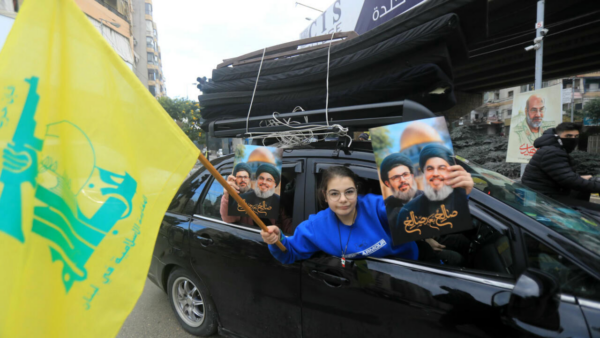People displaced by weeks of bombing on Hezbollah’s main stronghold in Beirut returned Wednesday to their devastated neighborhood, with some calling the ceasefire a “victory” for the militant movement.
The once-densely populated southern suburbs of the Lebanese capital were largely emptied as daily bombardments targeted the area during the Israel-Hezbollah war.
As a ceasefire took hold, thousands of people flocked back to the neighborhood, with some waving Hezbollah’s yellow and green flag.
Some broke down in tears at the sight of their ruined homes and businesses while others waited for excavators to clear rubble blocking access, AFP journalists reported.
The war intensified in September when Israel expanded the focus of its military operations from Gaza to Lebanon.
The move followed over a year of cross-border exchanges of fire between Hezbollah and Israel that started when the Iran-backed group launched strikes in support of its Palestinian ally Hamas.
While Israel carried out strikes on targets around Lebanon, the most intense raids in the war were on Beirut’s southern suburbs, much of which were left in ruins.
It was in the southern suburbs that Hezbollah’s longtime leader, Hassan Nasrallah, was killed in a massive strike on September 27.
Hezbollah’s survival hailed as a victory
In divided Lebanon, most residents of areas where Hezbollah holds sway profess to be loyal to the militant movement, the only militia that refused to surrender its weapons following the 1975-90 civil war.
“We are returning to these heroic suburbs, the suburb of (slain Hezbollah leader) Sayyed Hassan Nasrallah… We returned thanks to them,” engineer Nizam Hamade told AFP as he headed back towards his home.
“The resistance is victorious,” he said, referring to Hezbollah.
Hezbollah portrays itself as a resistance movement, and while it suffered historic losses during the war that came to a halt on Wednesday, its supporters see its survival as a victory against Israel.
“We headed back home at 4:00 am (02:00 GMT) just as the ceasefire came into place,” resident Fatima told AFP, giving only her first name.
After the truce took effect, Hezbollah began organising press tours in south Beirut, as well as its southern and eastern strongholds of the country.
Some residents said they immediately headed towards the place where their leader was killed.
“I was looking for the place where we lost our souls,” Diala told AFP, referring to the site of that deadly strike.
“I headed straight there and didn’t look at anything else.”
The deputy leader of Hezbollah’s political council, Mahmud Qomati, said the group was preparing an official public funeral for Nasrallah.
Hezbollah supporters were handing out pictures of Nasrallah and Hashem Safieddine, who was widely expected to be named his successor before he too was killed in a strike in early October.
Celebratory gunfire was heard early Wednesday as Hezbollah supporters on scooters brandished the group’s flag.
One man waved the yellow and green flag above the ruins of a building.
The conflict that began in October 2023 killed more than 3,800 people in Lebanon, according to the health ministry, most of them since September.
Over the course of the violence, the Israeli military sent out dozens of evacuation warnings for the southern suburbs, accusing Hezbollah of embedding itself in the civilian population for cover.
The Shiite Muslims are the most devastated
The most devastated by the Israeli Hezbollah war are the Shiite Muslims, and many of them believe they are being unfairly punished because they share a religious identity with Hezbollah militants and often live in the same areas.
As Shiites were fleeing their war-torn villages and neighborhoods, the conflict was increasingly following them to other parts of Lebanon, and this was fueling tensions, as scores of people have been killed by Israeli airstrikes on Christian, Sunni, and Druze areas where displaced Shiites had taken refuge. Many residents in these areas started thinking twice before providing shelter to displaced people out of fear they may have links to Hezbollah.
Since last October, more than 3,900 people have been killed in Lebanon, and women and children accounted for more than 25% of the dead, according to the Health Ministry, because Hezbollah hides most of its arms in residential areas. More than 1.2 million people have been displaced from their homes. Shiites make up about 25% of Lebanon’s 5 million people.
France24/ YL

